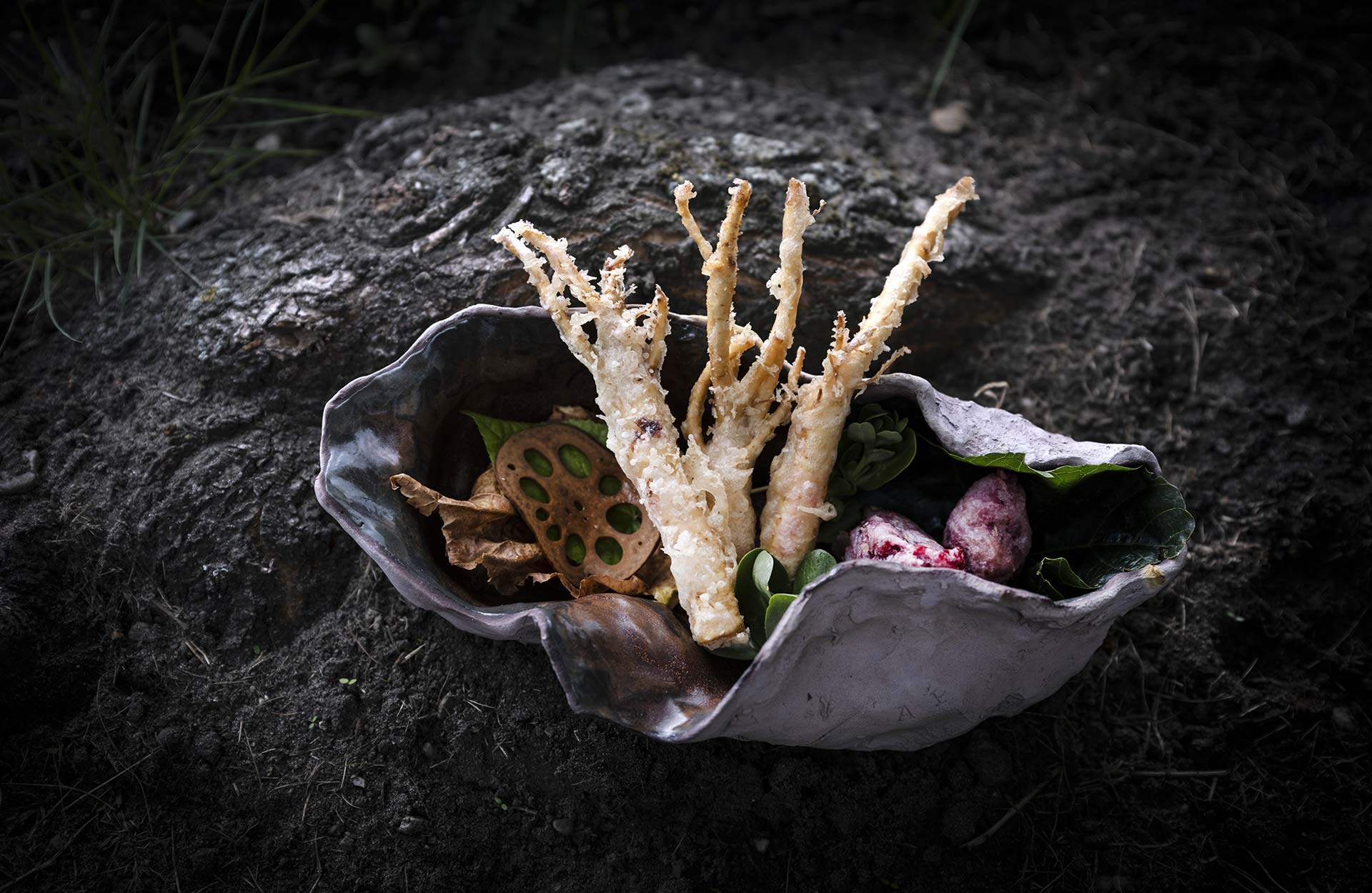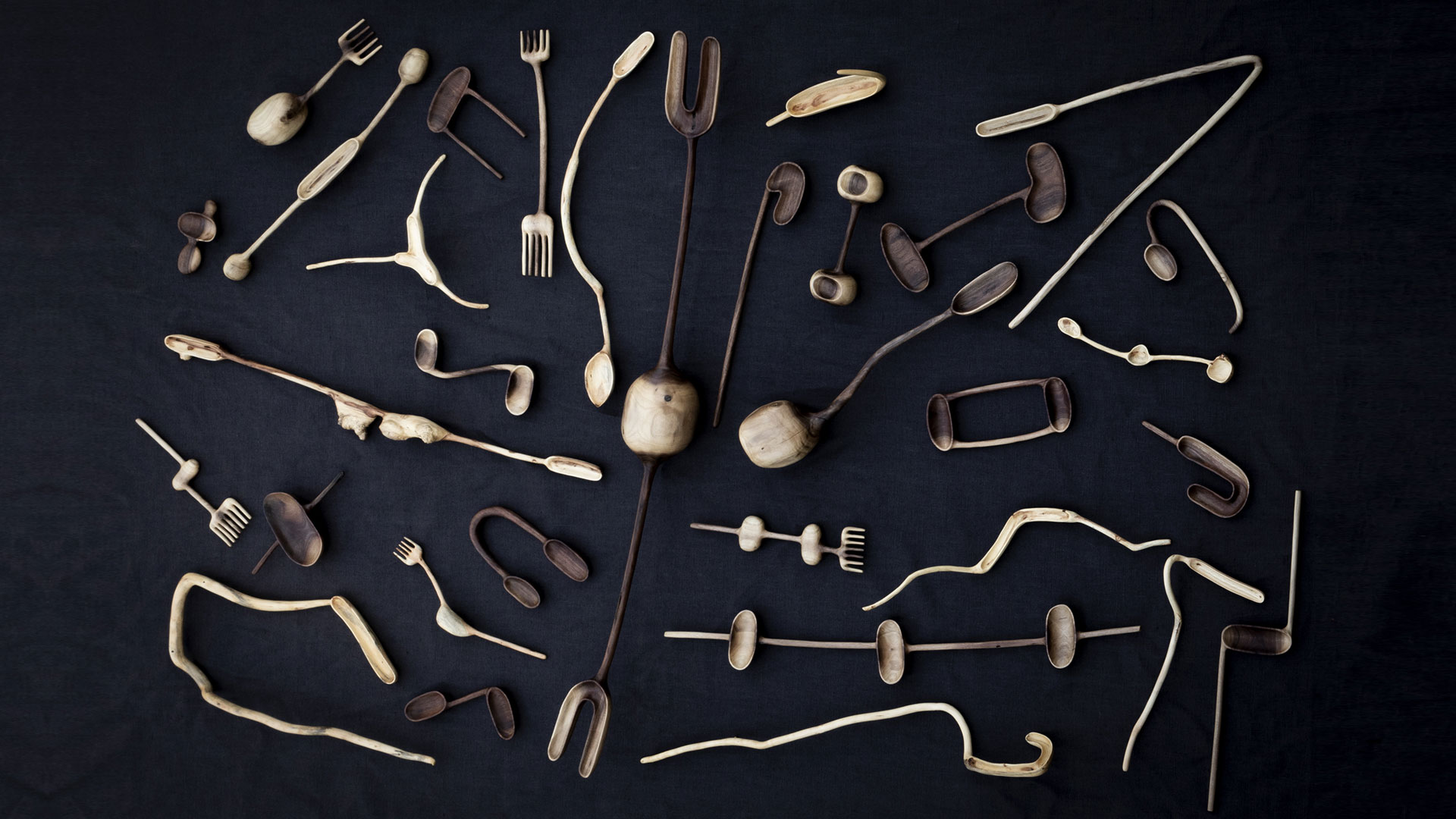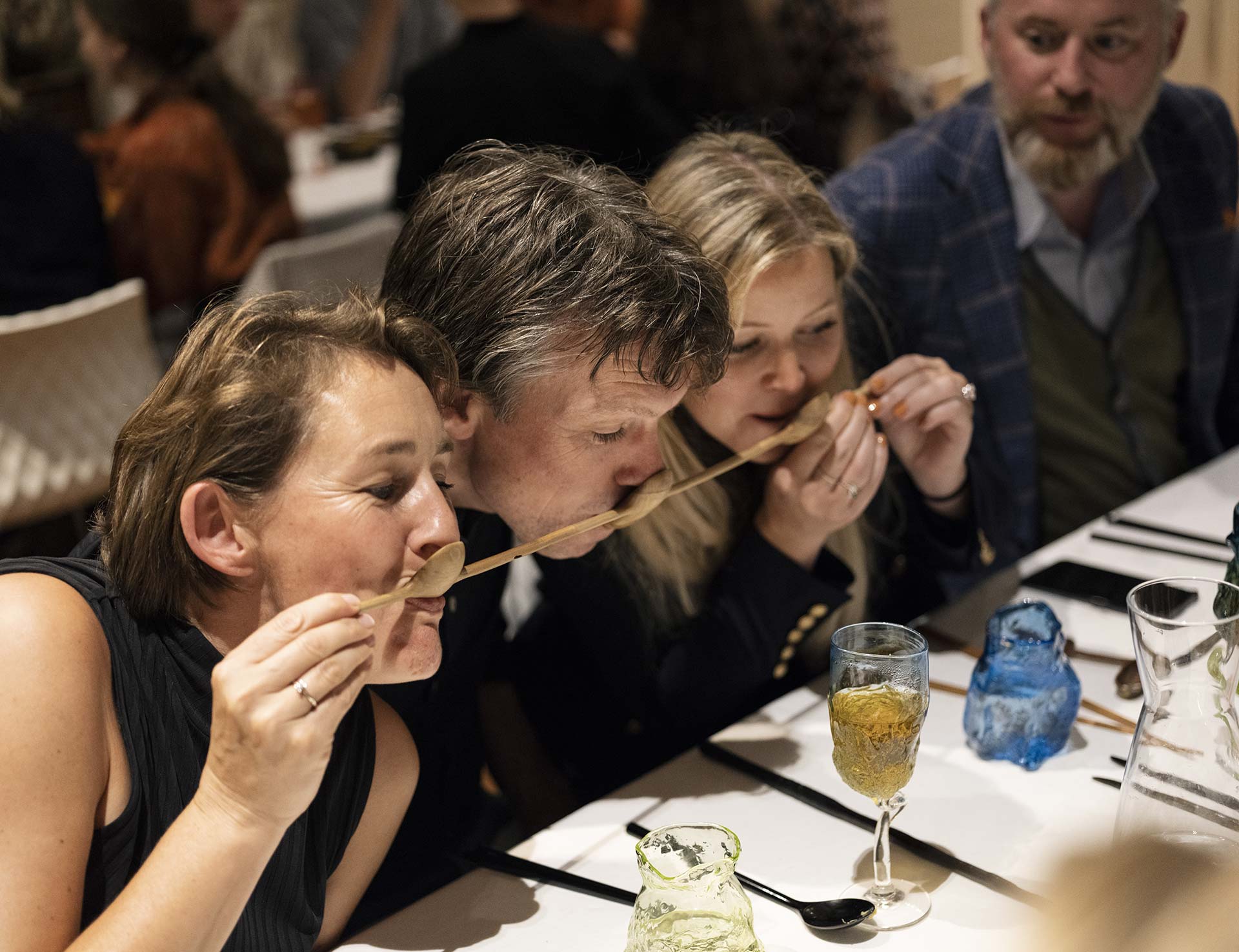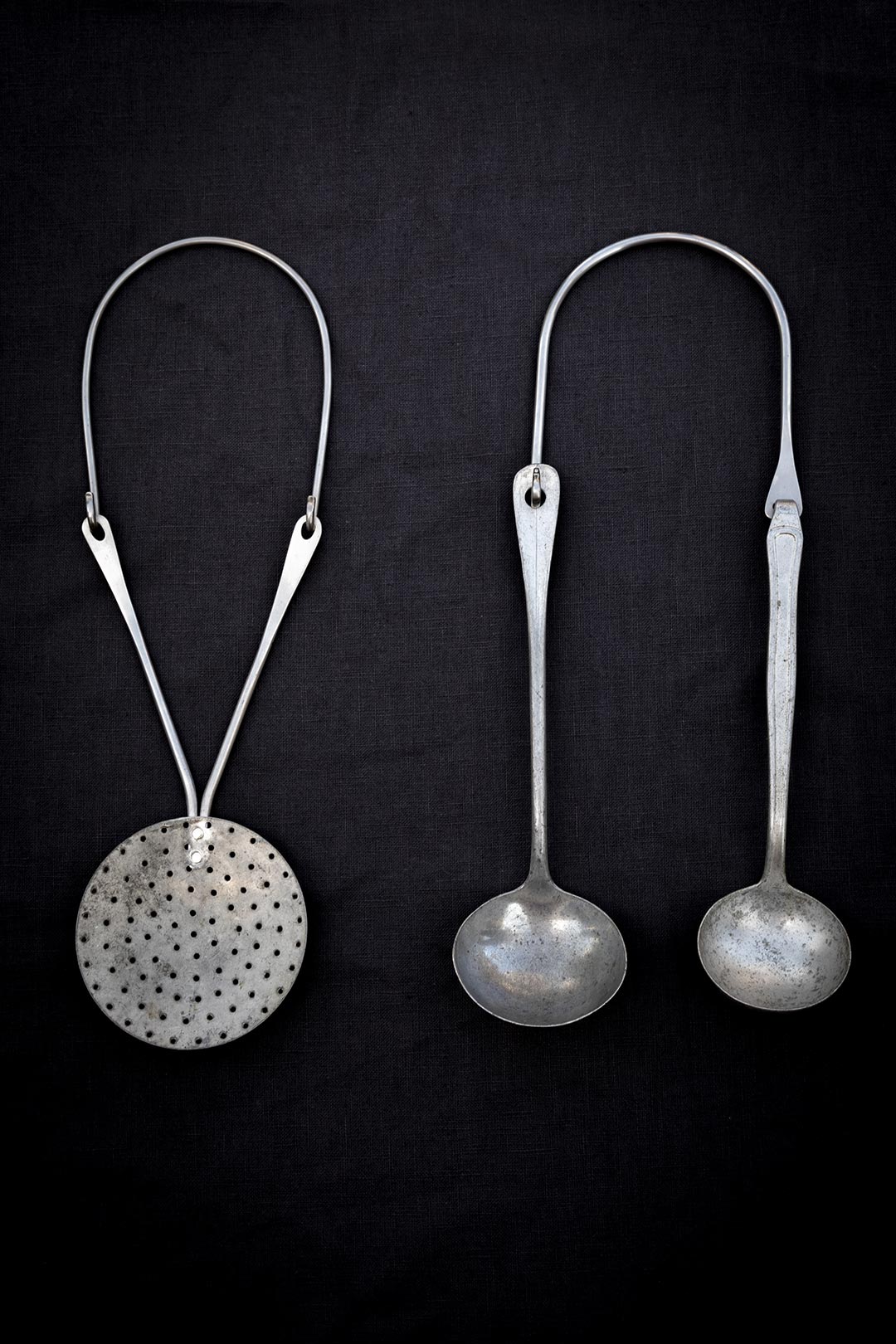A feast, where food, magically prepared by nature, can be served in calcareous bowls, plates made out of leaf blades and spoons and forks built using twigs. Such an experience can elevate the mundane act of eating into an immersive experience like no other. Contemporary initiatives in the domain of art and design oft manage to gratify these desires. Experimental Gastronomy by Amsterdam-based Steinbeisser is one such initiative that serves as a coalescence of food, design and fantasy. Through this programme, Jouw Wijnsma and Martin Kullik, founders of Steinbeisser seek new ways to experience food and ways of feeding oneself. Launched in 2012, the initiative brings together artists and chefs to design a unique culinary experience. While renowned chefs experiment with spices, vegetables, fruits and meat, among other edible accoutrements, artists and designers collaborating on this project build both experimental and biomimetic cutlery and dishware. Together, they direct a unique dining experience that can be savoured and later, acquired as tangible souvenirs.

The 2022 edition of Experimental Gastronomy, held in September this year, brought Korean chef and Seon Buddhist nun Jeong Kwan, of Netflix’s Chef’s Table fame, to Gemeenlandshuis, a historical landmark in Amsterdam, Netherlands. “This year was different from the other years as it was the first time that we had the chance to collaborate with Jeong Kwan Seunim, who is the head of the Baekyangsa Temple in South Korea where she practises Zen-Buddhism and cooks only for the colleagues and guests. It was one of the most healthy meals we’ve ever served, thanks to the delicate preparation techniques and all fermented ingredients,” says Martin Kullik, co-founder, Steinbeisser. This year also marks the beginning of Steinbeisser’s biodiversity initiative. Part of the proceeds acquired from various initiatives by Steinbeisser will be used to restore natural habitats and endangered plant species in the Netherlands. This is a significant step toward Steinbeisser's objective of being self-reliant, safeguarding biodiversity, and assuring a sustainable future.


At Gemeenlandshuis, Jeong Kwan—who has, for years, cooked temple food for herself and fellow monks in the Chunjinam Hermitage at the Baegyangsa temple in South Korea—prepared her brewed concoctions and seasoned savouries and served them in the dishes manufactured by the designers who have collaborated on this project. A wide array of non-traditional cutlery, prepared by different creatives, pressed the participants to eat differently, slowly, while pondering over the relationship between the tableware and the user. “The artworks were for the first time completely traceable, meaning that all materials had to be sourced by the artists locally, we only used wood from storm-felled trees harvested by the artists close to their studios, we only used locally sourced clay and glaze,” Kullik told STIR.
The 2022 edition of Experimental Gastronomy saw unique objects such as seaweed vessels, bowls made out of damaged oak wood, whimsical forks and spoons, burnt ash bowls and shell bowls, pinewood plates, peculiarly long chopsticks and burnt wood chopsticks and stained spoon necklaces. Kullik further elaborated, “Two artists explored the use of sludge (the runoff topsoil from farmland that is left uncovered and mostly found in industrial agriculture) harvested in rivers in France and the UK which was only possible due to the shortage of rainfall this year. We explored locally grown flax and seaweed for the tablecloths and discovered that to create beautiful shiny colours for glass or ceramics, you need oxides, oxides means metals, metals means mining, and the mining is done in countries where child labour is still rampant today, hence making it unethical.” The presentation of the seven-course meal on the elaborately designed cutlery pieces was followed by a Zen-Buddhist meditation to conclude the dinner event.
Experimental Gastronomy first began as an event that promised episodes of local vegan food experiences with cutlery designed exclusively for Steinbeisser. By combining two different art practices with the intention of inspiring an urge among the guests to create positive change, it fulfils multiple roles, of an intellectually stimulating event, a conversation starter, and a presentation that urges more conscious practices. Over the years, Steinbeisser has evolved to include glassware and textiles, thus enhancing the experience of guests, while also provoking new questions pertaining to materials and their sourcing. Pondering over this year’s event, Kullik says, “Overall it was an incredibly inspiring and thought-provoking project that led us to be much more aware of ethical sourcing practices for all materials including tableware. Also, with all the direct and indirect emissions created by such a project, the only logical next step for us is to stop flying chefs and artworks around the world, focusing instead on working with local artists and chefs. We also aim to monitor our entire emissions both direct and indirect starting in 2023 with the goal of being climate neutral by 2025.”

All the cutlery used at the event was sculpted using locally sourced natural or sustainable materials such as clay, wood, linen, seaweed and calabash, among others. While a few materials were found and acquired directly from the primary source, others were recycled or upcycled. A few designers who built innovative objects for the event include French glassblower Fabienne Schneider, United States-based artist Anubha Sood, French architect and artist Sebastien Krier, Korean artist and jewellery maker Joo Hyung Park, United Kingdom-based artist Pam Su, Dutch designer and craftsman Lukas Cober, artist and floral designer Cornelia Peterson and sculptor and designer Etienne Bailleul, among others.

All the designers derived inspiration from myriad sources for their innovative and upcycled designs. Fabienne Schneider, who presented Soil Glass vessels at the event, was inspired by soil and Anubha Sood’s Kelp tablecloth and Sea Urchin vessel are the result of years of devoted study on biomaterials. “The soil inspired me. I just dug a hole in the ground and blew the glass directly into the hole, trusting that the structure of the soil would shape the hot glass in a peculiar way. Because the soil nourishes us, it made sense that these pieces would become drinking glasses,” says Schneider.

Sebastien Krier’s pieces were built using the traditional Japanese technique of Yakisugi or Shou Sugi Ban, which not only results in a unique texture but also resists weather and weathering. Joo Hyung Park’s peculiarly shaped spoons and chopsticks touted as Never Be Apart and Moment, represented the feel of using our hands to hold objects. Park says: “It has always been the moment of pleasure to use our hands. I desire to capture the moment that gives us pleasure by using our hands, and make that moment into something else.”
Pam Su’s Kami Plates mimic the form and materiality of cocoons and are organic projections of the artist’s observations and experiences. They simultaneously managed to repel and allure the guests. Lukas Cober described his approach to sculpting his Burnt Wood chopsticks in these words: “When Steinbeisser approached me to make cutlery for the dinners with Zen-Buddhist nun Jeong Kwan, I wanted to create objects that tell a story of something that comes from the earth and goes back to earth and seeing beauty in all its states.” He worked with naturally fallen oak and acacia wood and naturally fired clay to craft the chopsticks. The coexistence of the two materials in the same space hints towards the right to exist, for all.
Cornelia Peterson’s Wild Spoons and Forks, built using material foraged by the artist, emphasised not only the imperfection and beauty of natural entities but also helped subvert the traditional designs of spoons and forks. Etienne Bailleul’s bowls, too, were built using locally sourced wood and stood like animated characters capable of holding edible brews.
This food and design event served as a break from contemporary art and design events that usually fill the physical and virtual spaces in the creative industry. It also highlighted sustainable design practices that can be easily implemented using partially damaged natural materials. The next edition of Experimental Gastronomy is scheduled to take place in September 2023, either in the UK or in Basel, Switzerland.






 Sign in with email
Sign in with email
















What do you think?